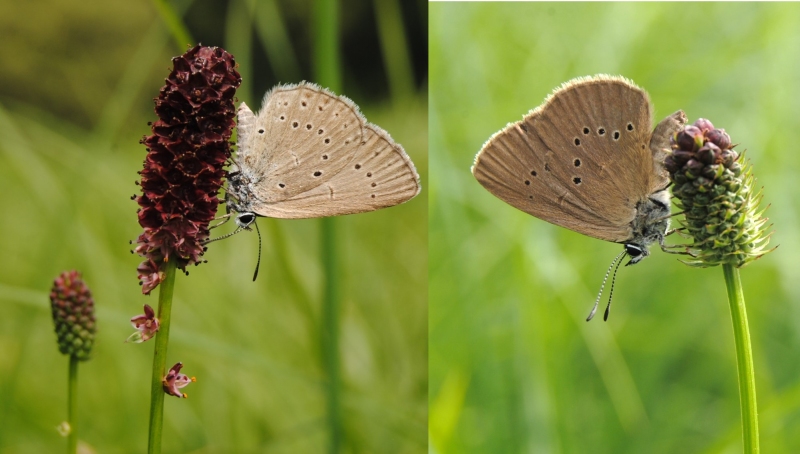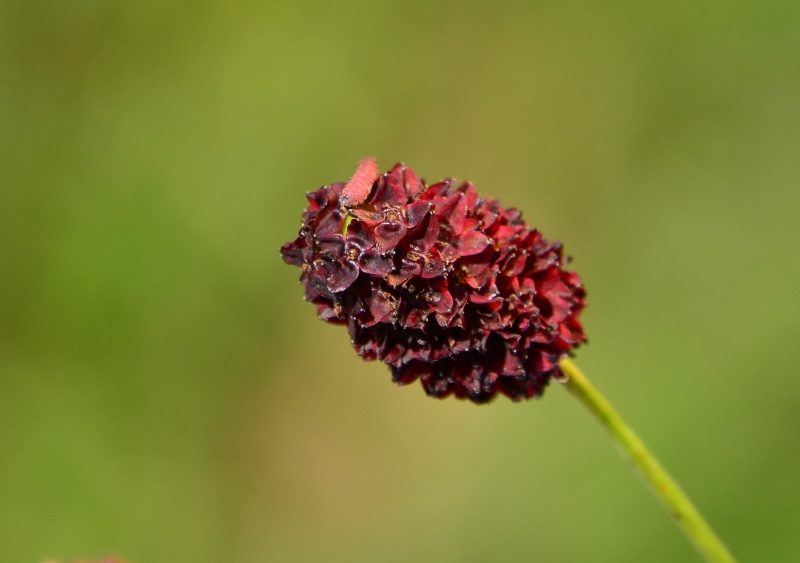Scarce and dusky large blue
The scarce large blue (Phengaris teleius) and the dusky large blue (Phengaris nausithous) are both butterflies from the family Lycanidae (the »blues«).
Description
The scarce large blue grows up to 3.5 cm, while the dusky large is a bit smaller (up to 3.2 cm). The underside of the wings is grayed with a characteristic pattern of black dots with a white border in two parallel rows with scarce blue, while the dusky has the underside of the wings more brownish with a single row of black dots. The upper side of the wings is blue in both species in males (there is a wider gray edge with the dusky), while females of both species are gray-brown.

Scarce large blue (left) and dusky large blue (right) ![]() M. Podletnik
M. Podletnik
Both species need the presence of the caterpillar food plant – the great burnet (Sanguisorba officinalis). Great burnet occurs on semi-moist and extinsively managed meadows. Both species like other Phengaris species have the same intimate relationship with ants of the genus Myrmica (most often with ants Myrmica rubra).

After hatching caterpillars live for a few weeks within the fowers buds of the great burnet ![]() G. Domanjko
G. Domanjko
Distibution
Both live throughout Europe and Asia. Nevertheless, both species are very scarce and locally distributed. In Slovenia, the scare large blue is widespread in the lowlands of Goričko, Pomurje region, Slov. Gorice, Dravinjska dolina, Ljubljanjsko barje and in zhe Nanoščica and Pivka river basins. Dusky large blur is widespread only in the lowlands of the NE part of Slovenia and therefore, occurs only in Goričko, Prekmurje region, Slovenske gorice,in the valleys of the Drava and Dravinja river and in the Savinja valley.
Conservation status
Both species have the status of a vulnerable species (category V). They are threatened by habitat loss and by fragmentation of habitats and, subsequently, the populations become isolated from each other.The most important conservation measure is the protection of wet meadows with the great burnet. The mowing in the appropriate time (in spring or in late summer) is crucial for theirs long-term conservation. Leaving an uncut grass refuges with great burnet is also a great alternitive.
Uncut refuge with great burnet enables butterflies to reproduce successfully (photo: G. Domanjko)








